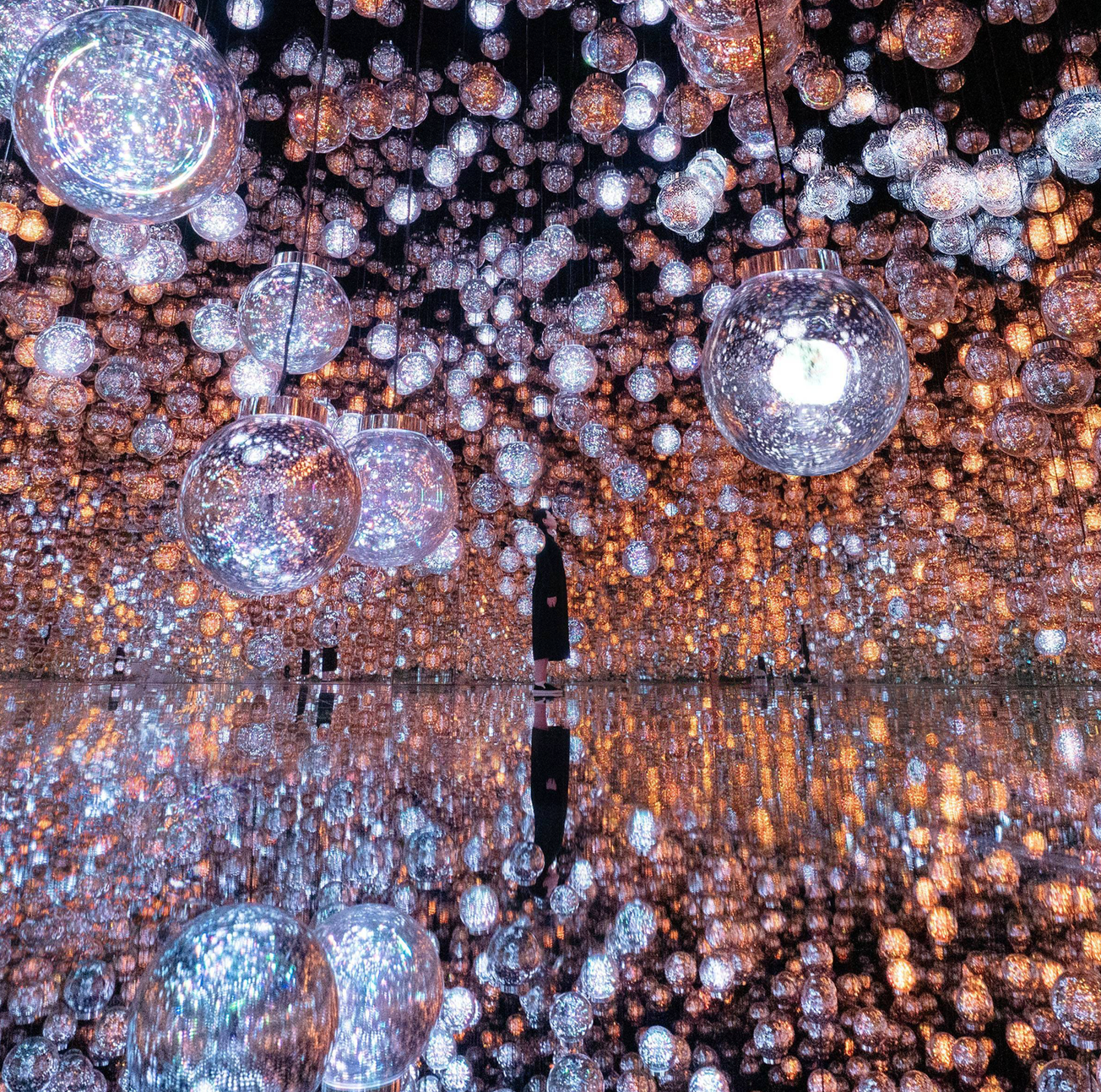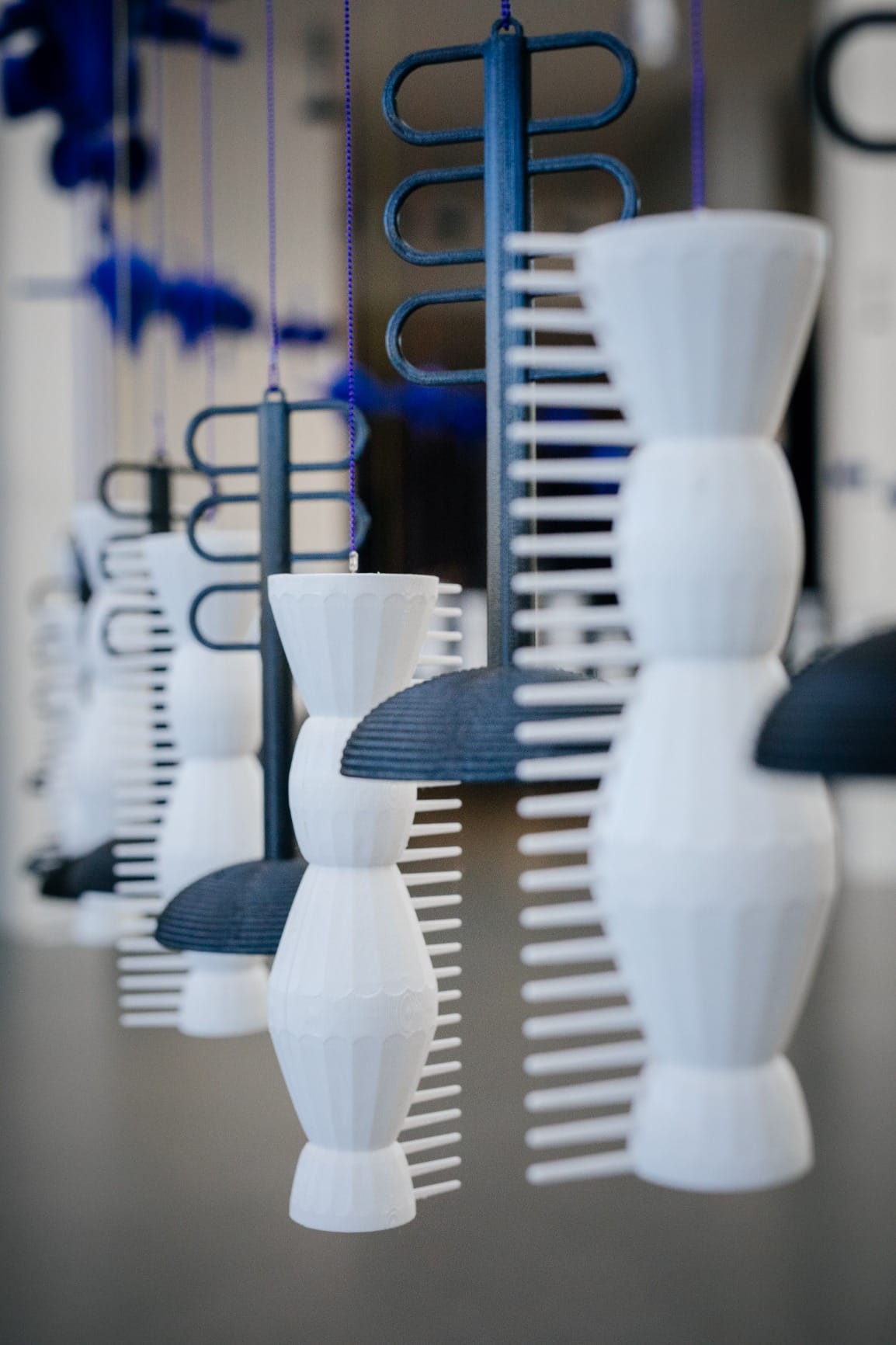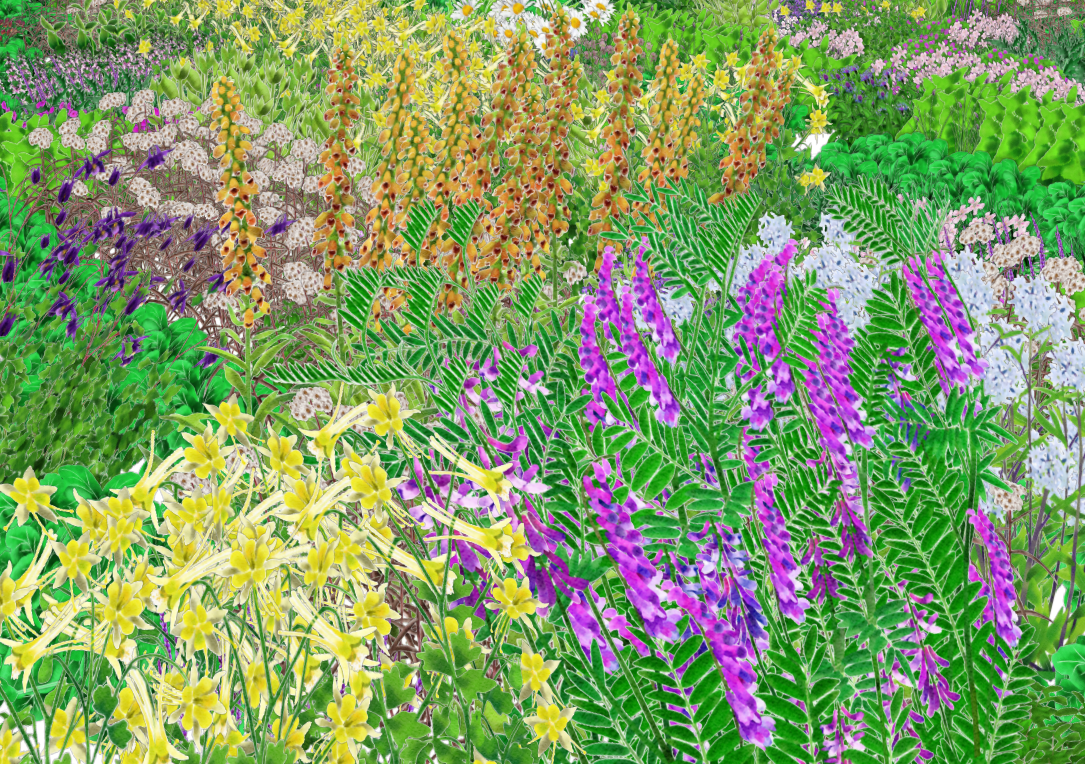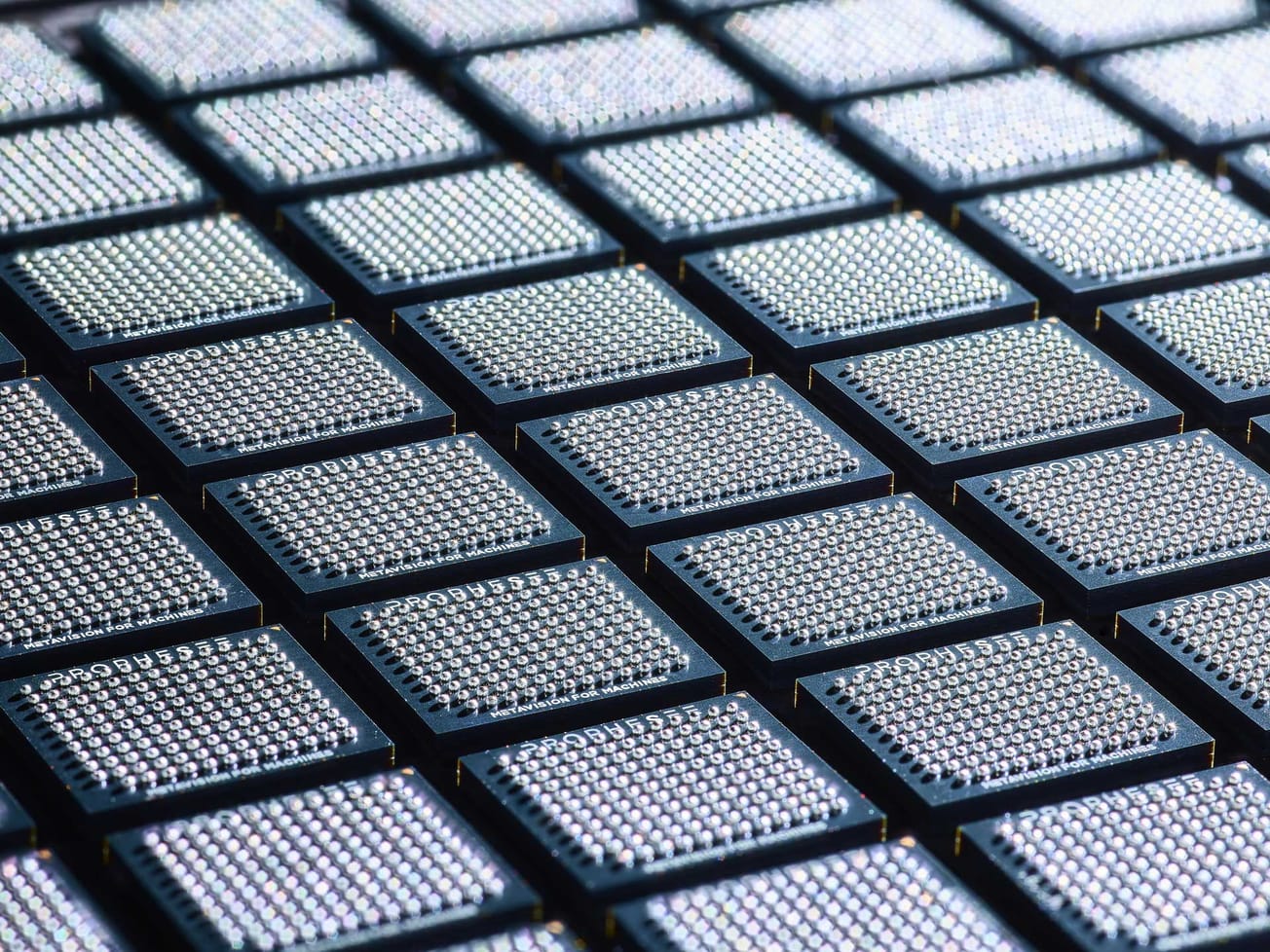Created by the art collective teamLab, Borderless is envisioned as a world where artworks move, communicate, and influence one another in a contiguous space free of boundaries. The 10,000 sq meter Mori Building Digital Art Museum invites the viewer into an immersive experience in the creation of new worlds. Borderless, previously operated in Odaiba from 2018 to 2022, will reopen in February 2024 in its new home at Azabudai Hills.
The February opening will feature two exhibitions: Bubble Universe and Megalith Crystal Formation, which is divided into two parts: Flowers and People and Black Wave.
The first exhibition, Bubble Universe: Physical Light, Bubbles of Light, Wobbling Light, and Environmental Light, is an interactive installation of reflective spheres of varying sizes containing individual light sources. The spheres create an indeterminate interplay of light within the interconnected environment. When approached by a visitor, a sphere’s light will increase in brightness and emit a tone. The visitor’s movement generates a dynamic interplay amongst neighboring spheres and between themselves and the spheres.
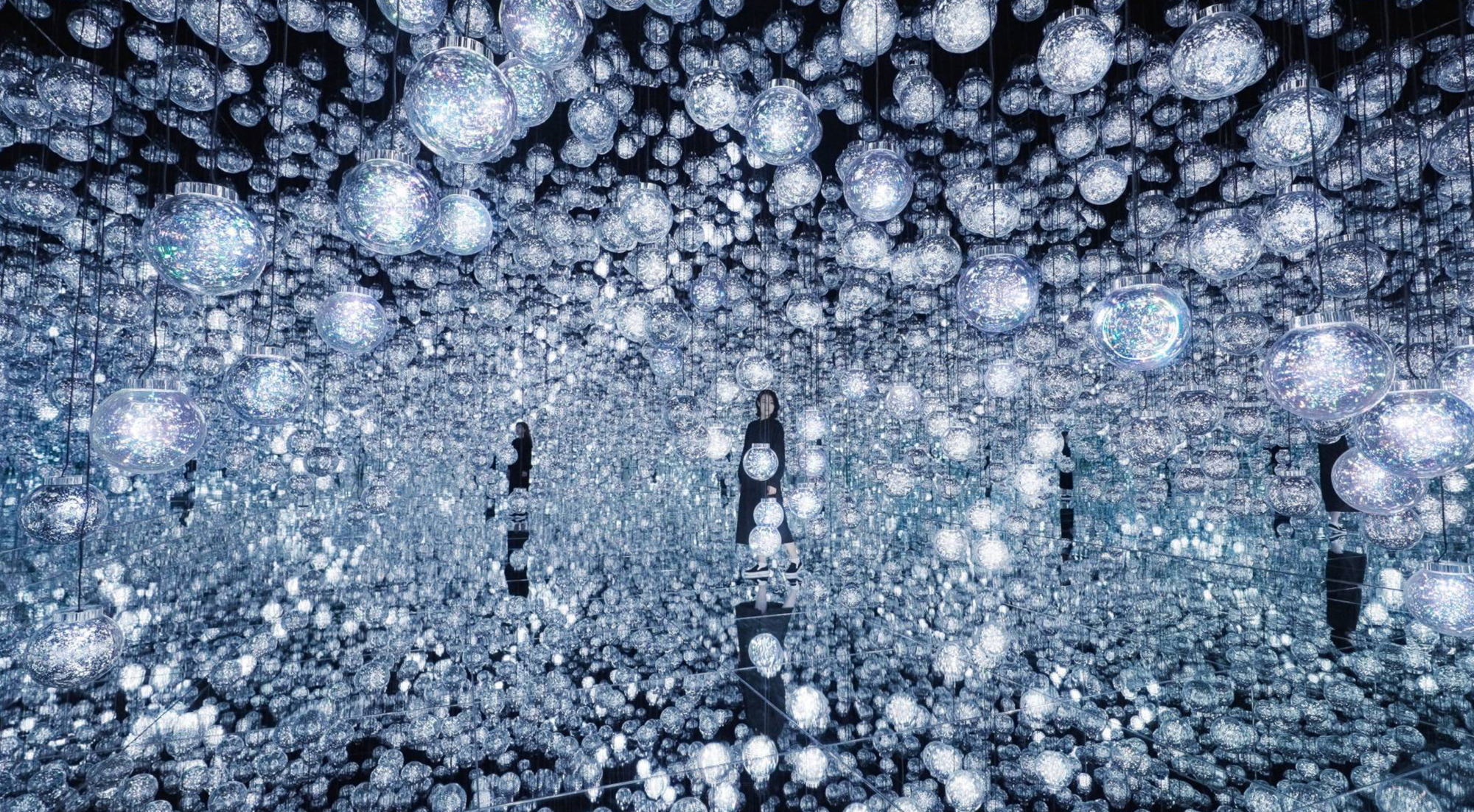
The second exhibition is titled Megalith Crystal Formation and is divided into two parts – Flowers and People and Black Waves. Generated by a real-time computer program, Flowers and People depicts flowers experiencing a cycle of blooming, withering, and fading away. Based on visitor movement through the space, the flowers harmoniously disperse, become still, and flourish.

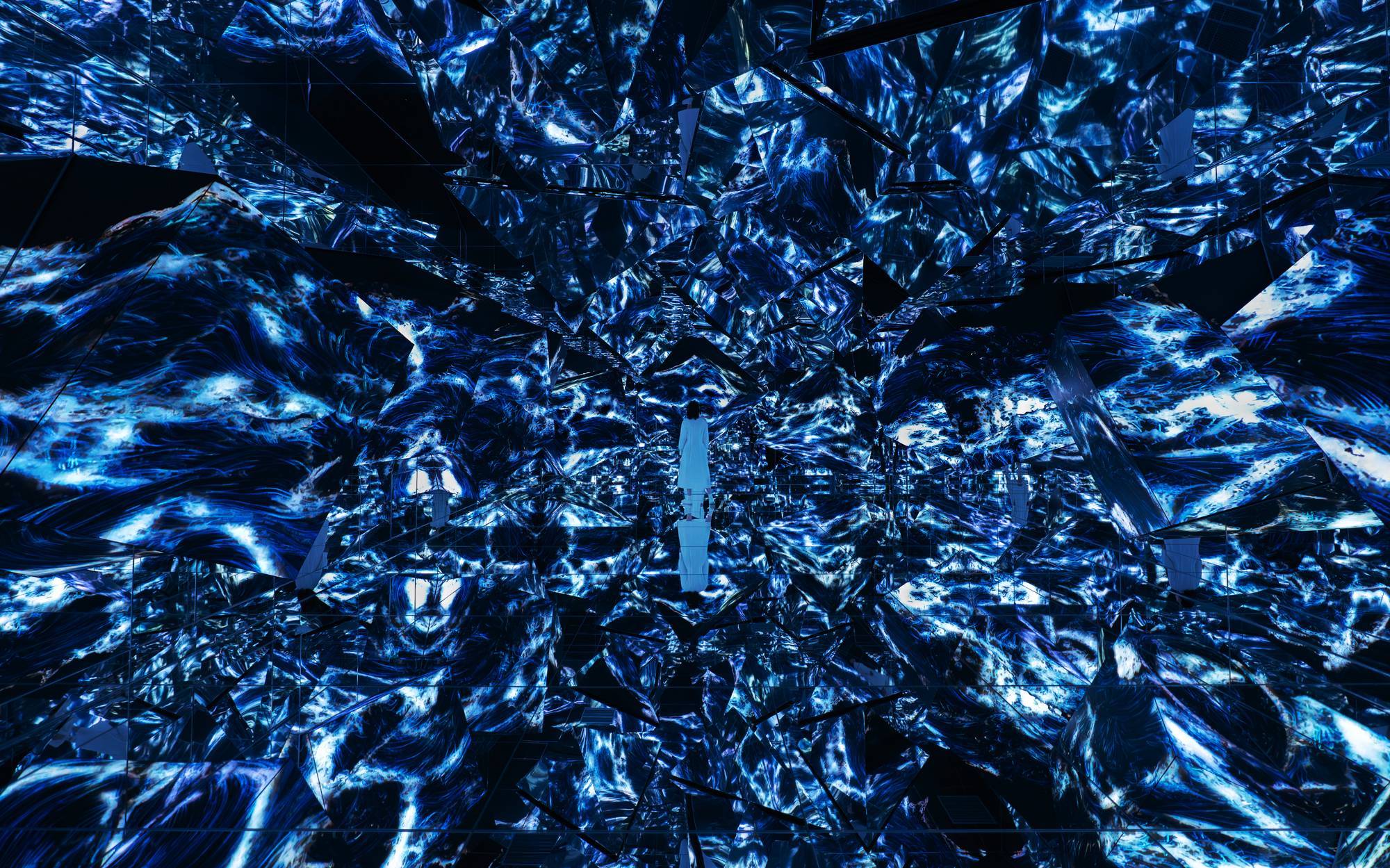
Exploring the interconnectedness of oceans, the Black Wave installation features temporal and spatial elements that, while existing separately, are connected to one another. Simulated waves and water particles in 3D space rise and disappear back into the ocean in three-dimensional space. Lines are subsequently created along these trajectories, forming three-dimensional waves. The surface that the waves are seen on doesn’t act as a barrier between the viewer and the artwork; rather, there is a seamless integration between the viewer's space and the continuous space of the artwork. TeamLab refers to this as Ultrasubjective space, which frees the viewer from their fixed perspective.

